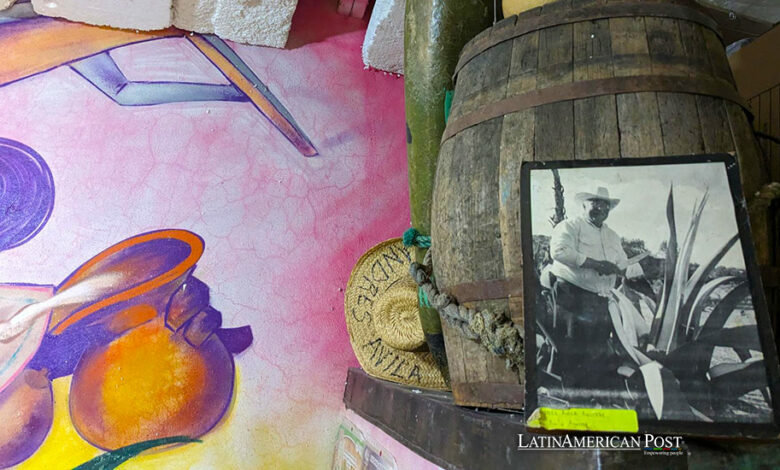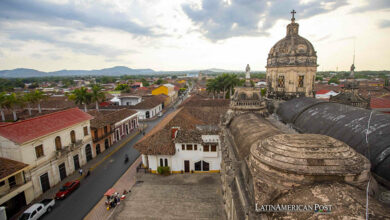Reviving Pre-Hispanic Pulque Drink: Mexico’s Battle Against Beer Domination

In Apan, the heart of Mexico’s pulque production, locals strive to rekindle national interest in this ancient beverage amidst growing pressures from the beer industry, aiming to preserve a cultural legacy.
Nestled in the central Mexican state of Hidalgo, the town of Apan greets visitors with a unique monument—a donkey statue and a tlachiquero, a local farmer who harvests aguamiel from the maguey plant. This symbolic sculpture signifies Apan’s deep connection to pulque, an ancestral beverage once revered as the drink of the gods by pre-Hispanic civilizations. Apan is not just any town; it’s regarded as the pulque capital of Mexico, accounting for two-thirds of the country’s production.
Preserving Apan’s Pulque Heritage
The landscape around Apan, dominated by wheat fields used by the beer industry, contrasts sharply with the town’s dedication to preserving its pulque heritage. Hidalgo is home to 4,858 hectares of maguey pulquero, representing 65.51% of the national cultivation. This region leads in pulque production, with an impressive output of 111.68 million liters annually, 66.89% of Mexico’s total, distributed in village fairs and historic pulquerias like Pulquería Andy, established in 1897.
Andrés Ávila Aguirre, a 71-year-old local and the fourth generation in a family of tlachiqueros continues to run the family business started by his great-grandfather. From the age of seven, he learned to scrape the maguey plants to extract aguamiel, the raw ingredient of pulque. “We are four generations in, all in the same place,” Ávila Aguirre shares proudly, offering a liter of natural pulque cured with a variety of 150 flavors ranging from pistachio and oat to exotic tastes like guava, melon, mango, and even red fruits, carrot, tangerine, cucumber, and celery.
Despite its rich history and cultural significance, pulque has faced challenges, particularly from the burgeoning beer industry. Documented records from 1931 show that Apan was once a thriving hub for pulque, with 30 pulquerias and at least ten tinacales (fermentation sites), dispatching 34.5 million liters of pulque to Mexico City. However, a shift occurred as breweries gained ground by promoting beer as a symbol of modernity, casting pulque and maguey cultivation as relics of the past.
Today, the maguey producers of Apan find themselves in a David versus Goliath battle against the beer industry. A large brewery operates only seven kilometers from Apan, and barley crops increasingly encircle the town. “Beer is winning and might defeat us unless we become vigilant. They say unity makes strength; it’s a daily battle to win over beer, and I wish to win, but beer is overpowering,” Ávila Aguirre laments.
In response to these challenges, efforts to safeguard the tradition of pulque have reached the Hidalgo Congress, which recently declared March 4th as the Day of Maguey, the father of pulque. “It represents significant symbolism as it combines culture and tradition, conferring heritage values and ties to Mexican mythology that speak of its divine origins,” states Rocío Jaqueline Sosa, a deputy who, along with Apan’s mayor María Guadalupe Muñoz, advocated for the establishment of this day.
This legislative recognition is part of a broader movement to revitalize interest in pulque, not just as a beverage but as a cultural artifact. The locals hope that by fostering a renewed appreciation for pulque, they can counter beer’s dominance and preserve a pivotal part of their heritage. Events like the annual Day of Maguey serve to celebrate and educate both locals and tourists about the historical and cultural importance of pulque.
Pulquerias: Living Museums
Furthermore, pulquerias like Pulquería Andy play a crucial role in keeping the tradition alive, offering a direct link to the past through each glass of pulque served. These establishments are more than just bars; they are living museums and cultural centers where the legacy of the tlachiquero is honored and continued.
As Apan continues to champion pulque, it faces the challenge of adapting to changing tastes and market dynamics while staying true to its roots. The town’s fight is emblematic of a larger struggle throughout Latin America, where many traditional practices and local industries face similar threats from globalization and commercialization.
Also read: Cultural Heritage at Stake as Mexico Battles Auctions
Apan’s dedication to pulque is a poignant reminder of the resilience of cultural traditions. In the face of modern pressures, the community’s efforts to preserve and celebrate pulque honor their ancestors and pave the way for future generations to appreciate and partake in this rich heritage. As more people rediscover the unique qualities of pulque, Apan stands as a beacon of cultural preservation, inviting everyone to taste a piece of Mexican history.





